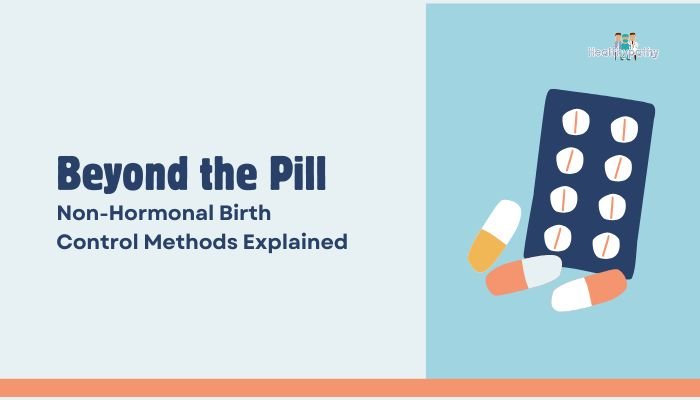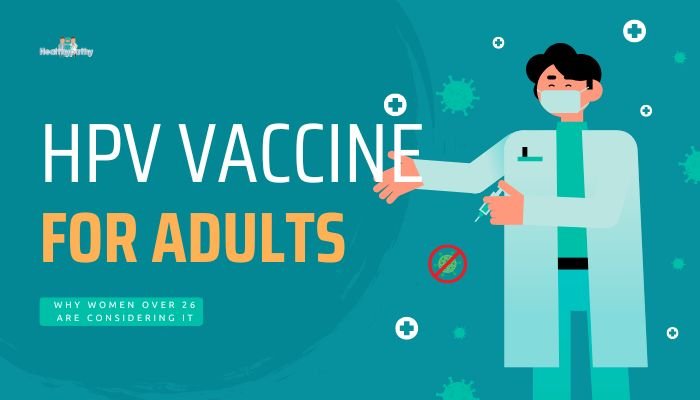Introduction
When it comes to birth control, many people immediately think of hormonal options like the pill or patch. However, a variety of effective non-hormonal alternatives exist for those who prefer to avoid synthetic hormones. Whether due to side effects, health considerations, or personal preference, choosing a hormone-free method can align with many women’s lifestyles and reproductive goals.
This article explores non-hormonal birth control options ranging from tried-and-true barrier methods to advanced devices like the copper intrauterine device (IUD). We’ll also discuss fertility awareness-based approaches, emphasizing the pros, cons, and effectiveness of each. Understanding what these methods offer can help you pick a contraception style that fits your body and routine—no hormones necessary.
Why Consider Non-Hormonal Contraception?
While hormonal contraceptives remain popular for their reliability and cycle benefits, they’re not for everyone. Reasons to avoid or limit hormones include:
- Medical Concerns: Some people with high blood pressure, migraines with aura, or clotting disorders must be cautious with estrogen-containing methods.
- Side Effects: Mood swings, decreased libido, or breast tenderness can arise with hormonal use.
- Preference for Natural Cycle: Some may want their menstrual cycle to proceed without synthetic hormones, maintaining ovulation and typical hormonal rhythms.
- Cultural or Personal Values: Certain lifestyles or spiritual beliefs discourage using hormonal forms.
Non-hormonal methods can prevent pregnancy while respecting these concerns. That said, they vary in ease of use and effectiveness, so exploring multiple options is worthwhile.
Barrier Methods
Condoms (Male and Female)
Male condoms are typically made of latex or polyurethane, forming a sheath that covers the penis during intercourse. They provide twofold protection:
- Pregnancy Prevention: By stopping sperm from entering the vagina.
- STI Protection: The only birth control that also reduces the spread of most sexually transmitted infections.
Female condoms, placed inside the vagina, form a lining that blocks sperm entry. While slightly less common, they allow women direct control of barrier use. Key points:
- Pros: Widely available, protect against STIs, no prescription needed.
- Cons: Must be used correctly each time; potential for breakage or slippage.
Diaphragm and Cervical Cap
Diaphragms and cervical caps are dome-shaped devices inserted into the vagina before sex, covering the cervix so sperm can’t enter the uterus. They work best with spermicide applied around the rim and inside:
- Pros: Hormone-free, reusable for multiple uses, can be inserted hours in advance of intercourse.
- Cons: Must be fitted or sized; if a woman gains or loses weight or has childbirth, a refit may be needed. Less effective without consistent, correct use.
Sponge
A soft, disposable sponge containing spermicide is placed against the cervix. It blocks sperm physically and chemically:
- Pros: Over-the-counter, single-use, can be used multiple times over 24 hours with repeated acts of intercourse.
- Cons: Less effective for women who have given birth vaginally; some find it messy or experience irritation from spermicide.
The Copper IUD (ParaGard)
The Copper IUD is a T-shaped device inserted into the uterus, providing long-term, hormone-free pregnancy prevention for up to 10–12 years. Copper ions create an environment unfavorable to sperm, preventing fertilization:
- Pros: Highly effective (over 99%), low maintenance once inserted, immediate return to fertility upon removal.
- Cons: Can cause heavier, more painful periods initially; insertion might be uncomfortable. Some users experience increased cramping or prolonged spotting.
Fertility Awareness Methods (FAMs)
Collectively known as Natural Family Planning or Fertility Awareness, these methods track ovulation to determine “safe” days for intercourse (or to use backup protection). Techniques involve:
- Basal Body Temperature (BBT): Monitoring slight daily temperature shifts post-ovulation.
- Cervical Mucus Observation: Changes in mucus consistency correlate with fertile windows.
- Calendar Method: Predicting fertile days based on average cycle length.
- Symptothermal Method: Combining multiple signs for improved accuracy.
Modern fertility apps now integrate these indicators, offering reminders and data analysis. However, FAMs demand consistency and discipline:
- Pros: No physical devices or chemicals, often cost-free, fosters deeper understanding of one’s cycle.
- Cons: Lower typical-use effectiveness compared to some options, easily disrupted by stress, illness, or irregular cycles, and offers no STI protection.
Lactational Amenorrhea Method (LAM)
LAM relies on exclusive breastfeeding to delay ovulation for up to six months postpartum. Breastfeeding hormones keep ovulation at bay, but the method’s success requires:
- Exclusive Breastfeeding: No supplemental formula or prolonged gaps between feeds.
- Infant under 6 months: Ovulation may resume after that point, or if feedings decrease.
- No Return of Menstruation: If periods restart, fertility may resume.
This approach is a short-term solution immediately following birth, effective under strict guidelines but easily compromised if feeding patterns change.
Withdrawal (Coitus Interruptus)
Commonly known as “pulling out,” the male partner withdraws before ejaculation to reduce sperm entering the vagina:
- Pros: No cost, no devices, always available.
- Cons: Demands high self-control and timing, offers no STI protection. Sperm in pre-ejaculatory fluid can lead to unintended pregnancy.
While accessible, withdrawal generally ranks among less effective methods, especially with typical use, and lacks a buffer against STIs.
Comparing Effectiveness
Typical-Use Failure Rates
According to common statistics:
- Copper IUD: ~0.8% failure rate.
- Male Condoms: ~13–15% failure rate.
- Diaphragm/Sponge: ~17–24% failure rate.
- Fertility Awareness: ~2–23% failure rate, heavily depending on the method’s precision and user adherence.
- Withdrawal: ~20–22% failure rate.
While perfect use can close these gaps, practical realities (user error, inconsistent application) raise the typical-use rates.
Considering STI Protection
Only condoms—male or female—offer reliable protection against most STIs. For those who rely on IUDs, diaphragms, or natural methods, combining a condom can address both pregnancy and infection concerns.
Factors Influencing Choice
Personal Health and Lifestyle
- Menstrual Preferences: Non-hormonal methods generally allow normal ovulation and menstruation, which can mean heavier flow or more cramping with copper IUD, or no changes for barrier methods.
- Comfort and Convenience: Daily temperature checks for FAM or insertion of a diaphragm before each act can feel burdensome for some. Others appreciate the autonomy of an on-demand method.
- Partner Involvement: Methods like condoms or withdrawal require coordination from both partners.
Effectiveness vs. Acceptable Risk
Some might accept a lower efficacy to avoid hormone-related side effects. Others prefer a near “set-and-forget” approach, leaning toward a copper IUD’s reliability. Weighing how a possible unintended pregnancy might affect life circumstances can shape the final decision.
Costs and Access
- Upfront Expense for IUD or Diaphragm: Might be higher, but long-term usage can prove economical.
- Ongoing Barrier Costs: Condoms, sponges, or spermicide require recurring purchases.
- Insurance Coverage: In some areas, the copper IUD or certain barrier methods might be partially or fully covered.
Practical Tips and Additional Support
Consult a Healthcare Professional
To determine the best fit:
- Physical Examination: Ensure no contraindications, such as allergies or conditions affecting insertion.
- Uterine Assessment: For IUD eligibility, an ultrasound or pelvic exam ensures your uterus can accommodate the device.
- Fitting Sessions for Diaphragm/Cap: Some devices require proper sizing for effectiveness.
Trying and Adjusting Methods
It’s not uncommon to sample one non-hormonal method and switch if it proves inconvenient or triggers side effects (like the heavier bleeding with copper IUD). Maintaining open dialogue with a healthcare provider ensures you find a sustainable choice.
Backup Plans
When using fertility awareness or withdrawal, keep condoms or emergency contraception on hand in case of mistakes, unexpected intercourse, or concerns about method failure. Consistency and readiness can minimize unexpected outcomes.
Conclusion
Non-hormonal birth control provides pregnancy prevention while preserving natural hormonal cycles or avoiding certain medical risks. Barrier methods like condoms and diaphragms, the copper IUD, and fertility awareness techniques each offer distinct pros and cons. Individual preferences regarding effectiveness, convenience, cost, and health considerations guide the ultimate selection.
Whichever path you choose, open communication—both with your healthcare provider and sexual partners—can strengthen your confidence and comfort in using non-hormonal methods. Regularly revisiting your choice also ensures it remains compatible with your evolving lifestyle and reproductive goals.
References
- Trussell J. Contraceptive failure in the United States. Contraception. 2021;101(3):113–120.
- American College of Obstetricians and Gynecologists. FAQ: Barrier methods of birth control. (Accessed May 2025).
- United Nations. Contraceptive use by method 2021.(Accessed May 2025).
- Mansour D, Inki P, Gemzell-Danielsson K. Efficacy of contraceptive methods: a review of the literature. Eur J Contracept Reprod Health Care. 2010;15(1):4–16.
- Leung VW, Soon JA. A user’s guide to fertility awareness-based methods. J Nurse Pract. 2023;19(4):445–453.
- Hatcher RA, Trussell J, Nelson AL, Cates W, Stewart FH. Contraceptive Technology. 21st ed. Ardent Media; 2021.
- World Health Organization (WHO). Family planning/Contraception methods. (Accessed May 2025).
- CDC. US Medical Eligibility Criteria for Contraceptive Use, 2021. (Accessed Apr 2025).
- Kontopantelis E, Presanis A, Dakin H. Real-world effectiveness of withdrawal as a contraceptive method. J Fam Plann Reprod Health Care. 2024;50(1):58–64.
- Skoczylas L, Koelper N, Turok DK. Nonhormonal contraception: options for women and men. Obstet Gynecol Clin North Am. 2022;49(1):69–84.







